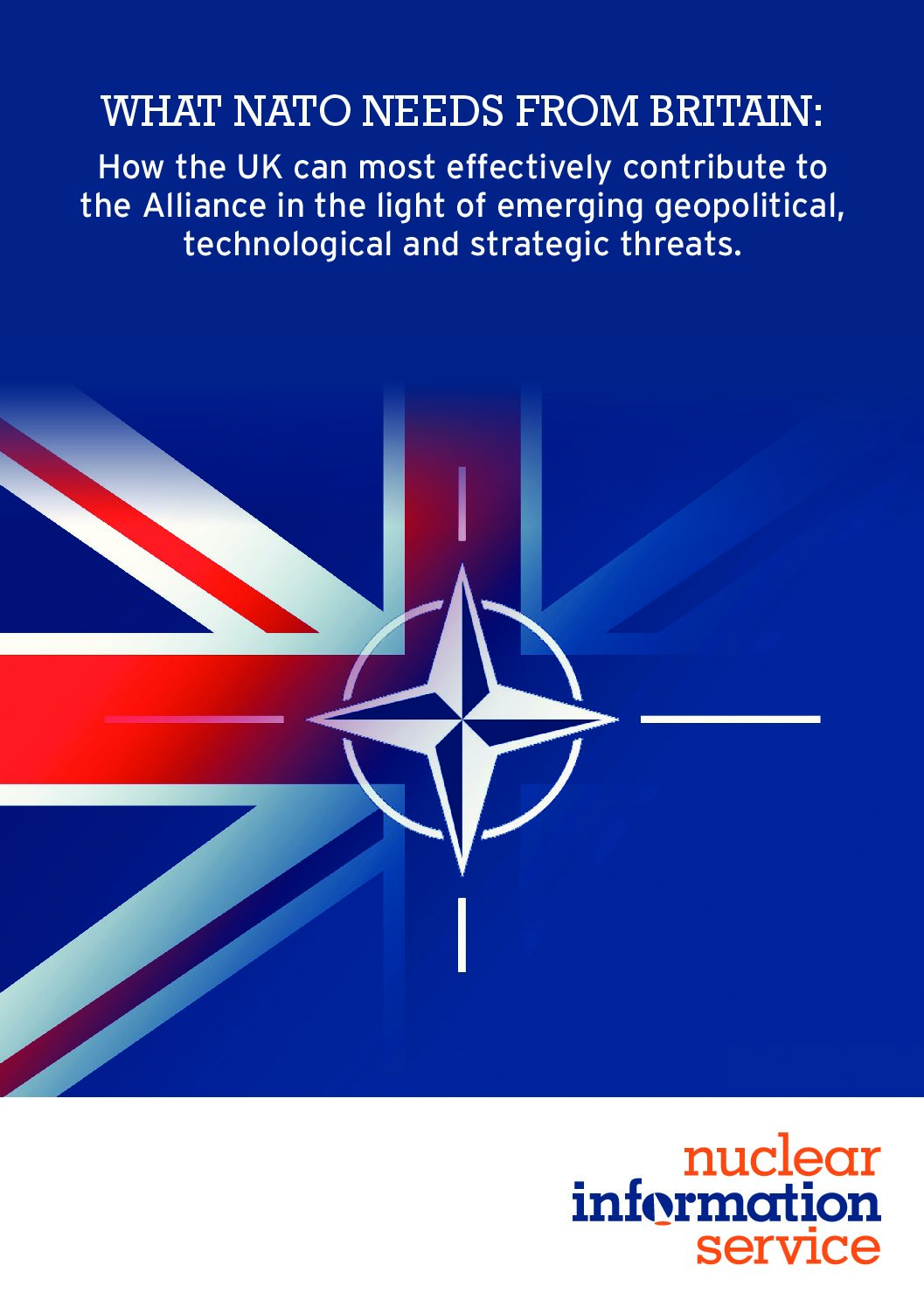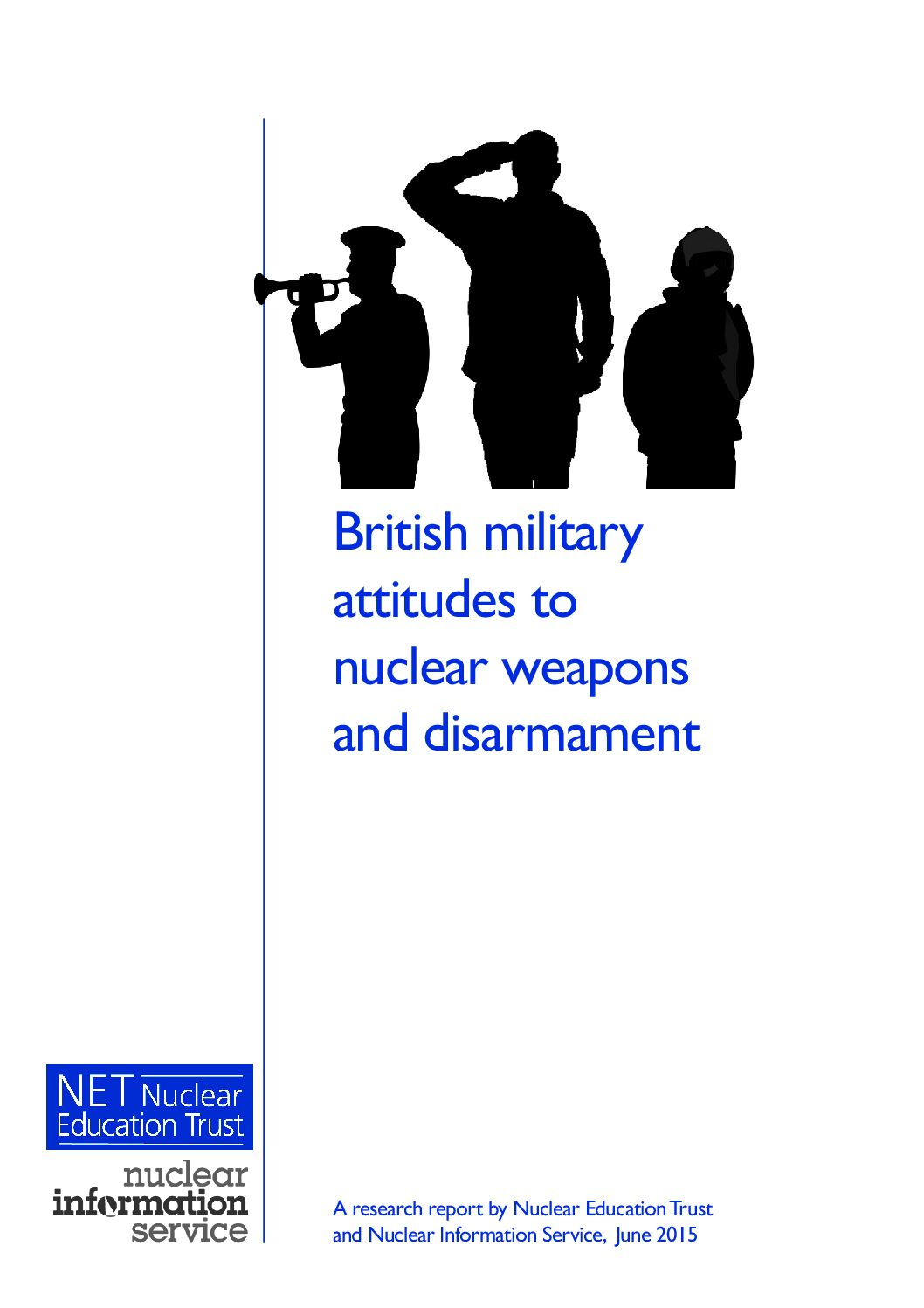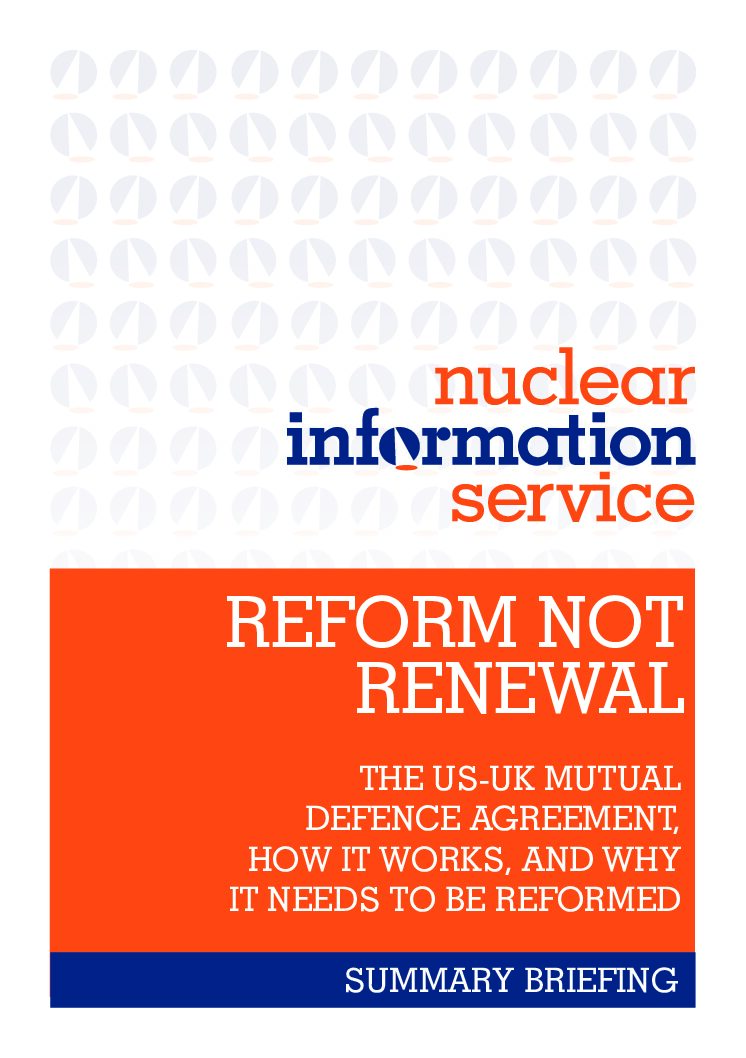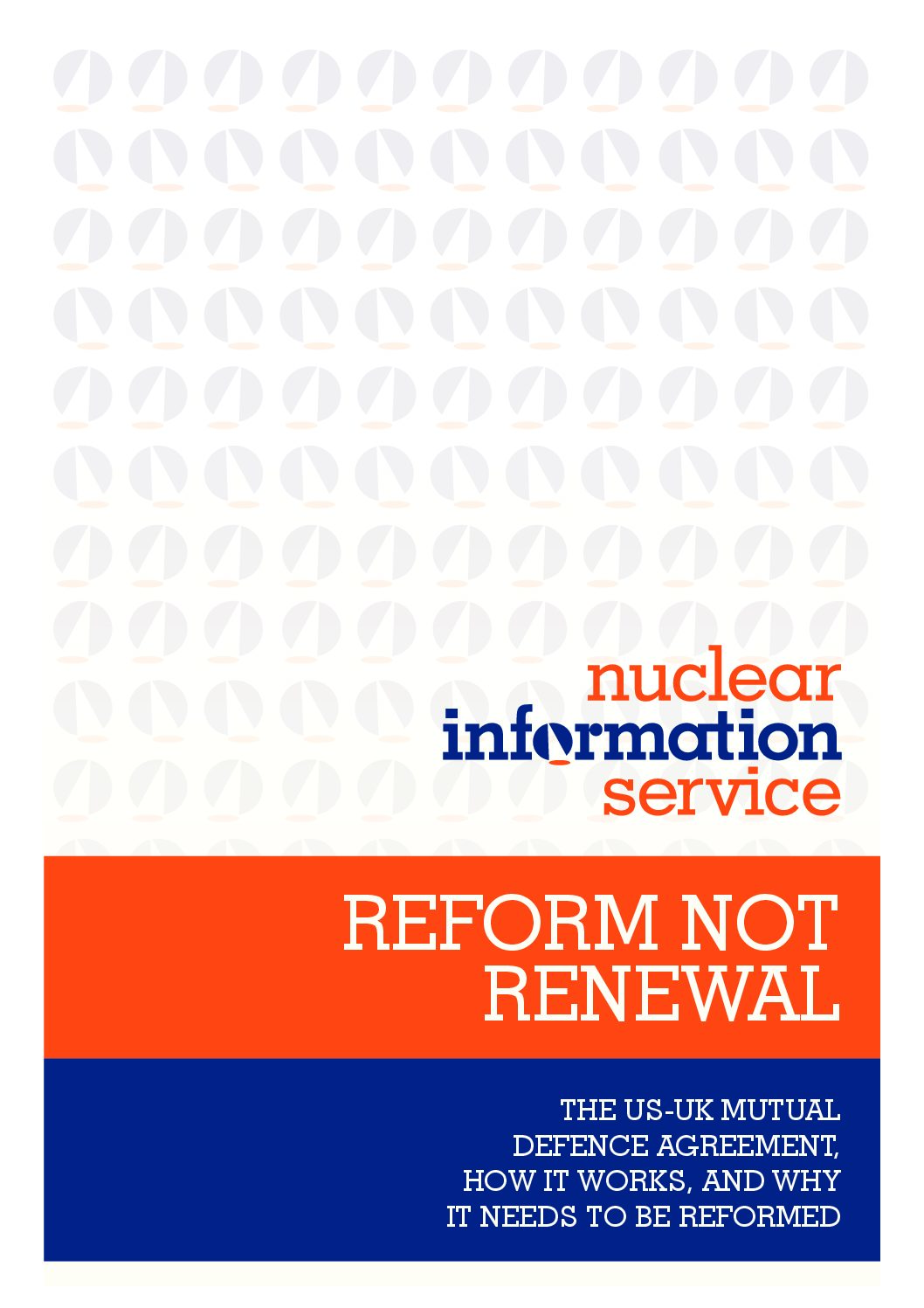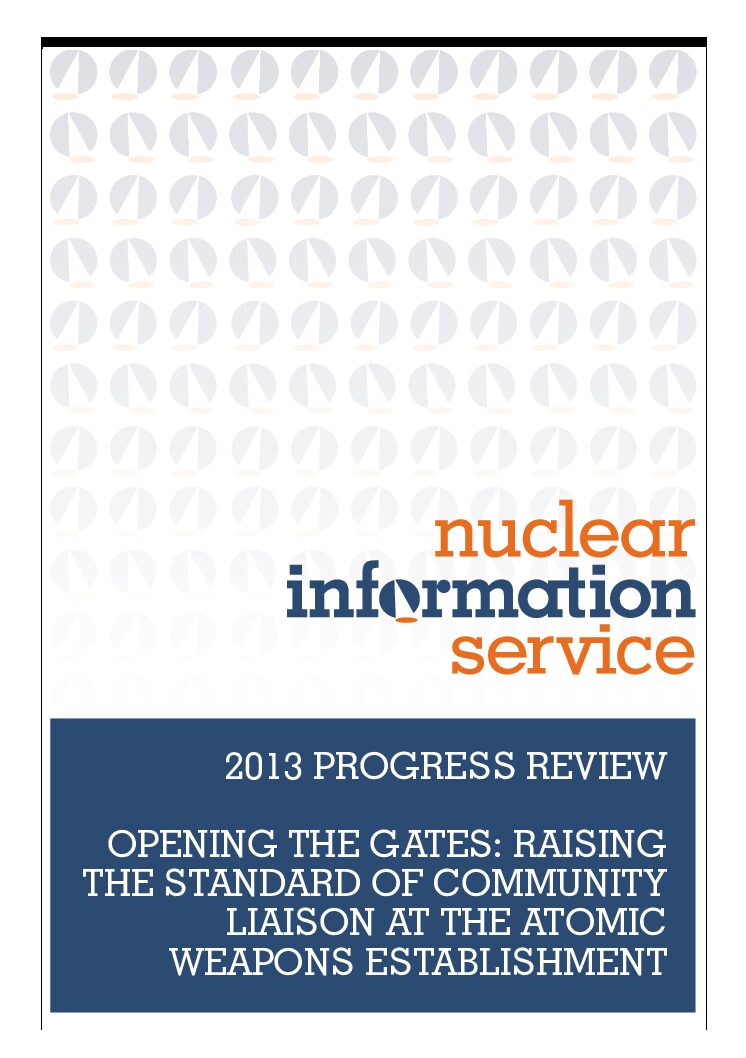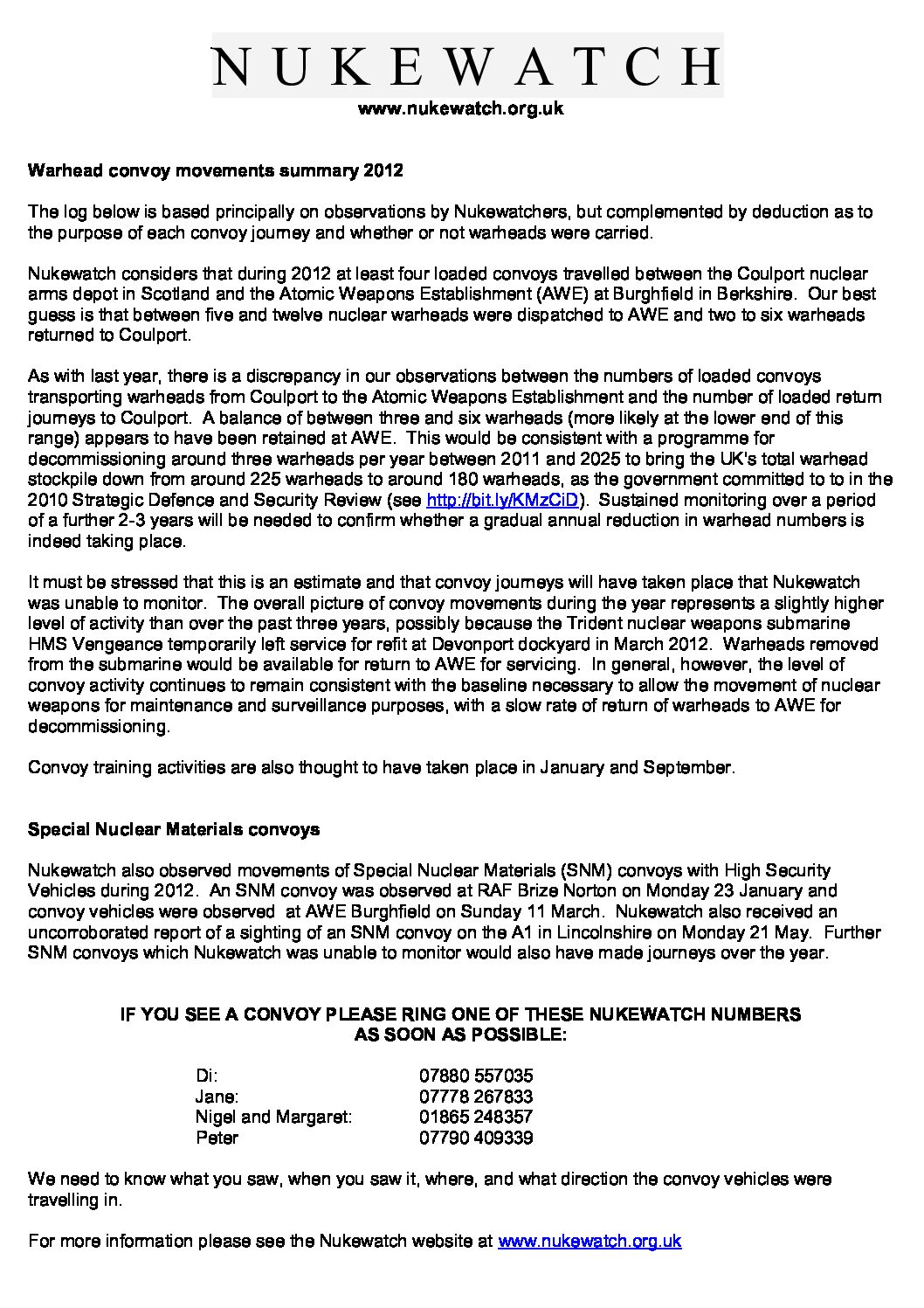How can the UK most effectively contribute to the Alliance in the light of emerging geopolitical, technological and strategic threats?
NIS reports
Some reports are available to order as hard copies here https://form.jotform.com/203293750177053
-
-
Report: British military attitudes to nuclear weapons and disarmament. A research report by Nuclear Education Trust and Nuclear Information Service, June 2015
A ground-breaking study into how the UK’s military community views nuclear weapons and disarmament has highlighted significant concerns about the costs and role of Trident. The funding crisis facing the Ministry of Defence means that spending on nuclear weapons is increasingly seen as unjustifiable when conventional equipment is needed and many in the armed forces have lost their jobs.
-
Summary Briefing: REFORM NOT RENEWAL: The US-UK Mutual Defence Agreement- How it works and why it needs to be reformed.
A controversial agreement which allows nuclear weapons technology to be shared between the United States of America and the United Kingdom undermines global non-proliferation efforts and should be reformed to make it relevant to work aimed at preventing the spread of nuclear weapons.
-
Briefing: REFORM NOT RENEWAL: The US-UK Mutual Defence Agreement- How it works and why it needs to be reformed
The US-UK Mutual Defence Agreement (MDA) was first signed in 1958 to allow the exchange ofclassified nuclear information, nuclear weapon technology, and scientific expertise, with the aim ofhelping both nations to develop their nuclear weapons systems.
-
2013 PROGRESS REVIEW. OPENING THE GATES: RAISING THE STANDARD OF COMMUNITY LIAISON AT THE ATOMIC WEAPONS ESTABLISHMENT. Standards of accountability and openness at Atomic Weapons Establishment rated “poor” in annual review
-
Nukewatch: Warhead convoy movements summary 2012. UK warhead reductions continuing, according to convoy monitoring data.
-
THE LAY-PERSON’S ALTERNATIVE GUIDE TO REPPIR RELATING TO THE ATOMIC WEAPONS ESTABLISHMENT (AWE) ALDERMASTON AND BURGHFIELD
This Lay-Person’s Alternative Guide to the Radiation (Emergency Preparedness and Public Information) Regulations 2001 examines and assesses the derivation and applicability the off-site emergency planning arrangements in place for the Atomic Weapons Establishment nuclear weapon plants at Aldermaston and Burghfield.
-
OPENING THE GATES : Raising the standard of community liaison at the Atomic Weapons Establishment
This report examines the performance of the Atomic Weapons Establishment’s (AWE) Local LiaisonCommittee (LLC) and compares it with standards of transparency and accountability adopted elsewherein the UK nuclear industry. It is not a critique of AWE or of defence policy, but a review of the standards of accountability and democracy which AWE applies in its […]
-
Project Hydrus – AWE Aldermaston’s proposed new hydrodynamics research facility
On 16th July 2010 the Ministry of Defence submitted a planning application to West Berkshire Council for construction of a new hydrodynamics research facility at the Atomic Weapons Establishment (AWE) Aldermaston. The new facility, known as Project Hydrus by AWE’s planners, is the latest development in AWE’s site development strategy for modernising and rebuilding the […]
-
Credit crunch cash shortage raises doubts over new nuclear weapons
Cash shortages caused by the credit crunch will force the next government to choose between replacing the Trident nuclear weapons system and meeting flagship goals to halve child poverty, raise the state pension in line with earnings, and keep education spending growing, according to a report on the affordability of Britain's nuclear weapons published today by the Nuclear Information Service (NIS).
-
Report: Swamped! The devastating impact of the July 2007 floods on Britain’s nuclear weapons factories
-
NIS technical briefing note: JSP 538 – Regulation of the Nuclear Weapons Programme
‘Joint Services Publication 538: Regulation of the Nuclear Weapon Programme’ (JSP 538) is the definitive Ministry of Defence guidance document on nuclear and radiological safety requirements within the UK nuclear weapons programme. A redacted copy of the full 522 page document was placed in the House of Commons Library in May 2008 in response to a Parliamentary Question1. This NIS technical briefing provides a brief summary of its contents and a commentary on some salient points.
Download the full report below:
